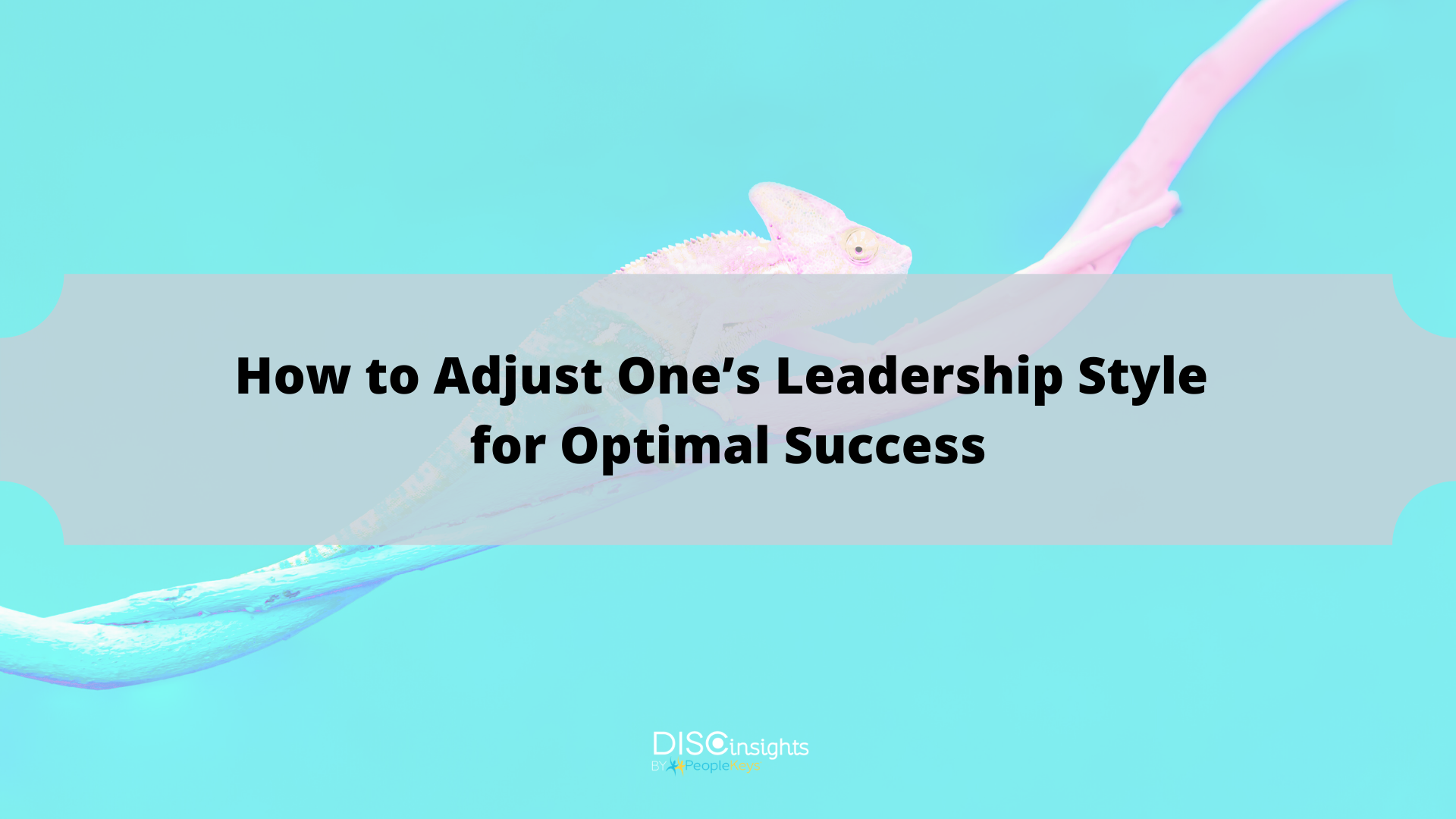- SHOP BY PRODUCT
- DISC TRAINING & CERTIFICATION TOOLS
- DISC RESOURCES
- BLOG
- SHOP BY PRODUCT
- DISC TRAINING & CERTIFICATION TOOLS
- DISC RESOURCES
- BLOG
- ALL ITEMS



Leaders come in all personality styles and have different strengths: High “Ds” are strong on execution, high “Is” are good at interacting with others, high “Ss” are consistent and steady, and high “Cs” develop great procedures and systems. Likewise, so do their team members. A strong leader must be able to “flex” or adjust their leadership style to not only lead with their own personality strengths, but also to adapt to the personality styles of their team members and the needs of the task at hand. An executive coach can help guide a leader to adjust their leadership style and become more effective through these four steps:
 Step 1: Raising self-awareness
Step 1: Raising self-awarenessBy being keenly aware of their strengths, as well as the trigger points and areas they may need to work on, your client can be more productive and effective as leaders. The best way to do this is by taking the PeopleKeys 4D: DISC, TEAMS, Values, and Behavioral Attitudes Report and studying it closely in your daily interactions. Executive coaches can administer the assessment to their clients and walk through the results with them so they understand all the nuances of their personality style, thinking style, values and internal motivators.
None of us are good at everything. By using known strengths as a foundation of one’s leadership style, you will see what areas may need growth and build a behavioral action plan so your client can not only shine as a leader, but also help their team grow. For instance:
Each personality style also has some limitations that can get in the way of their leadership abilities. Being aware of these “blind spots” in your personality/leadership style, and working on overcoming them, can help you communicate better with your team members, improve motivation and morale, and make your team more productive. For instance:
By identifying the personality styles of their peers and team members, a strong leader can adjust accordingly in order to communicate and connect with each of them. For instance:
If your goal is to become a leader or improve your leadership skills, or you’re coaching executives and leaders, follow the above 4-step process to help your clients adjust their leadership style and help them go to the next level of their success. See also how leaders can benefit from executive coaches with opposing DISC personalities.

© PeopleKeys. All Rights Reserved
WORKING DAYS/HOURS
Mon - Fri / 8:30AM - 5:00PM EST
